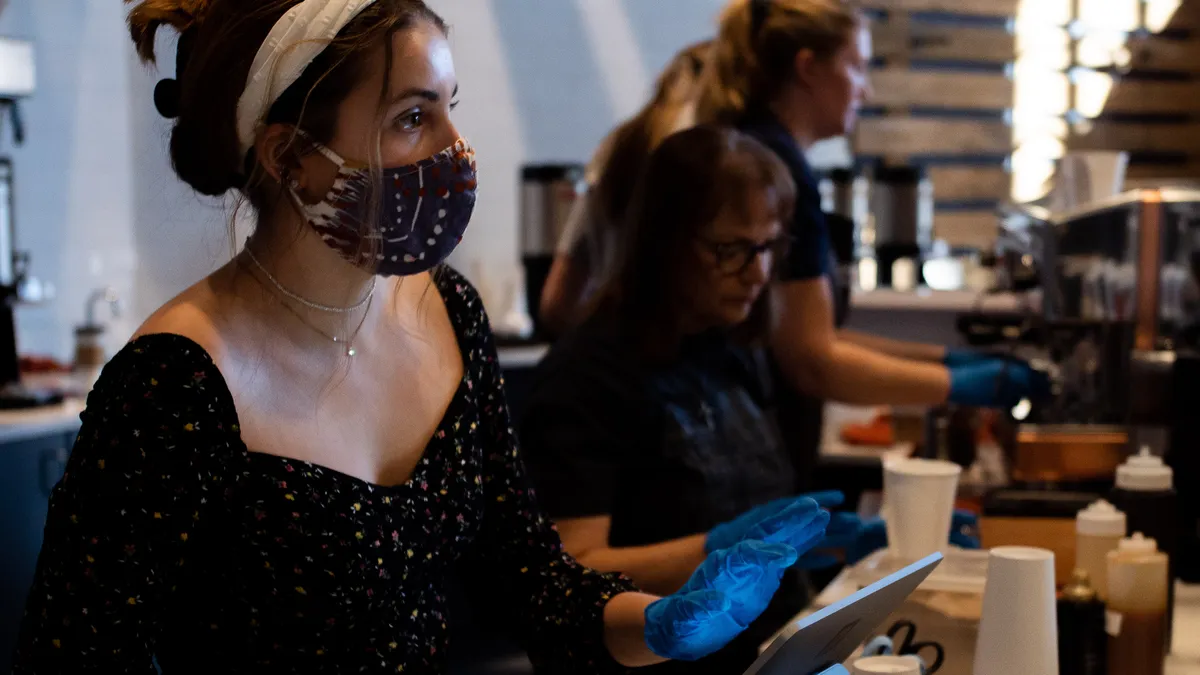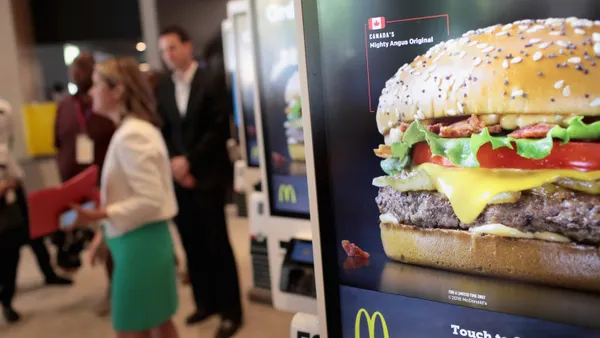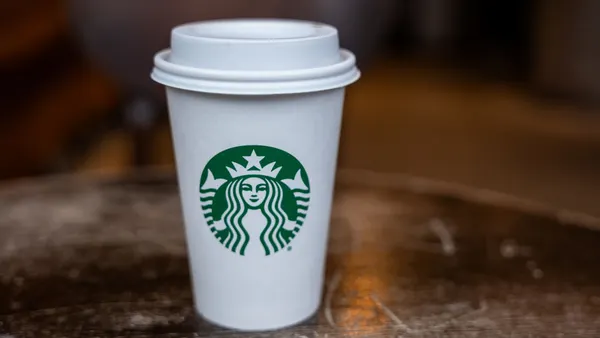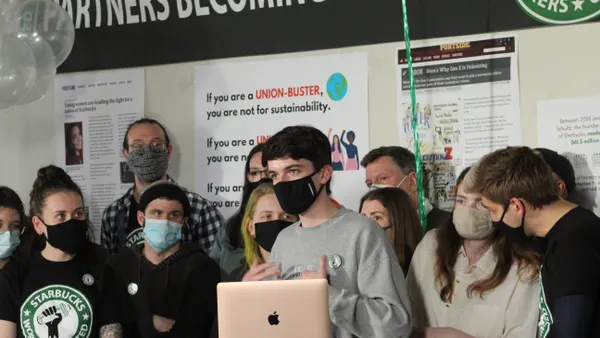Dive Brief:
- A study from the U.S. Centers for Disease Control and Prevention finds that illnesses and death rates from COVID-19 are spreading faster in jurisdictions that allow on-site restaurant dining. The study, conducted from March to December 2020, examined changes in the growth rates of COVID-19 cases and deaths in counties before and after state-issued mask mandates went into place and restaurant dining was allowed.
- Mask requirements at retail businesses and restaurants correlated to a 0.5% decrease in the daily growth rate of cases within 20 days, and up to a 1.8% decrease up to 100 days later. Allowing on-premise dining was associated with 1.1% increases in cases up to 100 days after restrictions were lifted, and 3% increases in COVID-19 death rates 81 to 100 days after restrictions were lifted.
- The study comes as Texas, Mississippi and Massachusetts reopen dine-in service at 100% capacity. The governors of these states point to declines in average daily COVID-19 cases and hospitalization rates as cause to abolish restrictions, but the CDC has cautioned that these decisions could undermine the gains the U.S. has made in slowing the spread of the virus.
Dive Insight:
This latest CDC study echoes a similar study report conducted by the agency in September, which found that adults who have tested positive for COVID-19 were approximately twice as likely to have reported dining at a restaurant in the two weeks before becoming sick.
This time around, the CDC reiterates that mask mandates and restrictions on dining "can help limit community transmission of COVID-19 and reduce case and death growth rates."
The National Restaurant Association has taken issue with the report's data, which does not differentiate between indoor and outdoor dining risk. The association dubbed this one of "numerous flaws" in the report, which it said in a statement is "more an ill-informed attack on the industry hardest-hit by the pandemic than a reliable piece of scientific research," adding that "correlation does not equal causation." The NRA pushed against the CDC's lack of distinction concerning these environments in its September report as well.
The association also argues the CDC report didn't control for other important factors, such as policies issued by localities, other types of business closures, physical distancing recommendations and variances granted by states to certain counties.
"It is irresponsible to pin the spread of COVID-19 on a single industry. Restaurants have historically operated with highly regulated safety protocols based on the FDA's Food Code and have taken additional steps to meet the safe operating guidelines required by CDC, FDA, OSHA, federal, state, and local officials during the pandemic," the association said.
The CDC's report also doesn't report the risk for restaurant employees specifically, versus the risk for consumers who dine out. Texas and Mississippi restaurant workers told the Associated Press they're concerned for their safety and that restaurant restrictions are lifting too soon, while two recent studies — one from UCLA and UC Berkeley and another from UC San Francisco — found that restaurant cooks have the highest increased mortality rate during the pandemic.
A number of restaurants are maintaining their COVID-19 protocols despite the restriction rollbacks. McDonald's, for example, said it will continue to enforce its COVID-19 protocols in Texas and Mississippi, including closed dining rooms and mask mandates. A company spokesperson told Fox News it will make operational decisions based on the recommendations of health experts.
Whataburger is also keeping its mask requirement in place for guests and 50% capacity in its dining rooms, while Starbucks said it has no plans to drop its mask requirement in Texas. Even smaller concepts, like P. Terry's and Alamo Drafthouse, have said they're maintaining their safety measures. Alamo Drafthouse tweeted it is "only following the guidance of the CDC and medical experts, not politicians."











